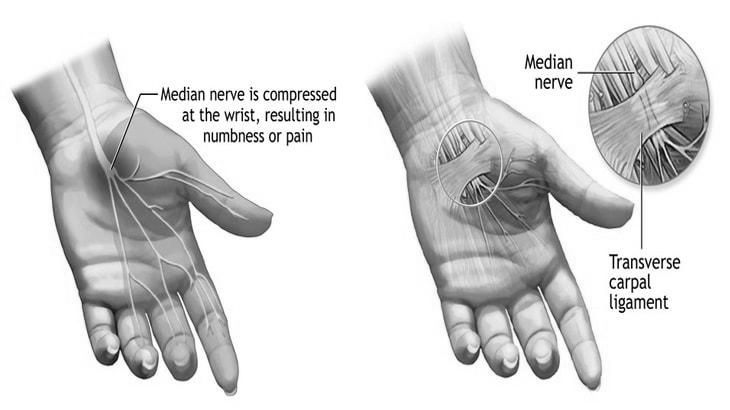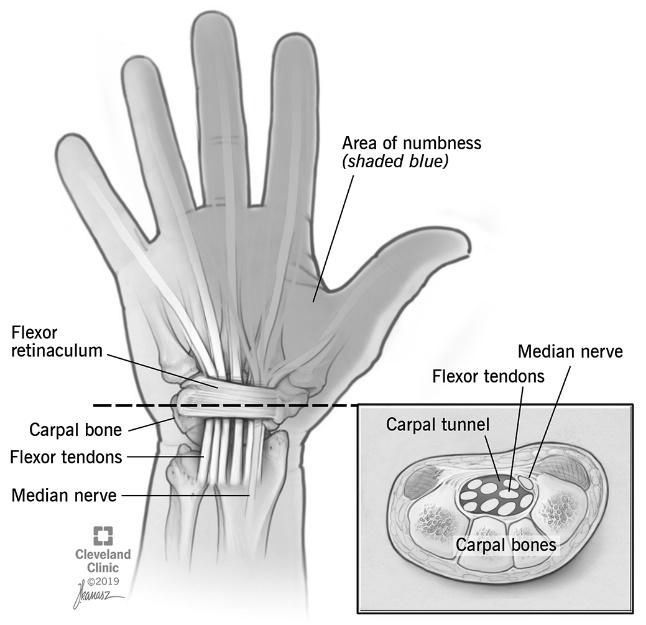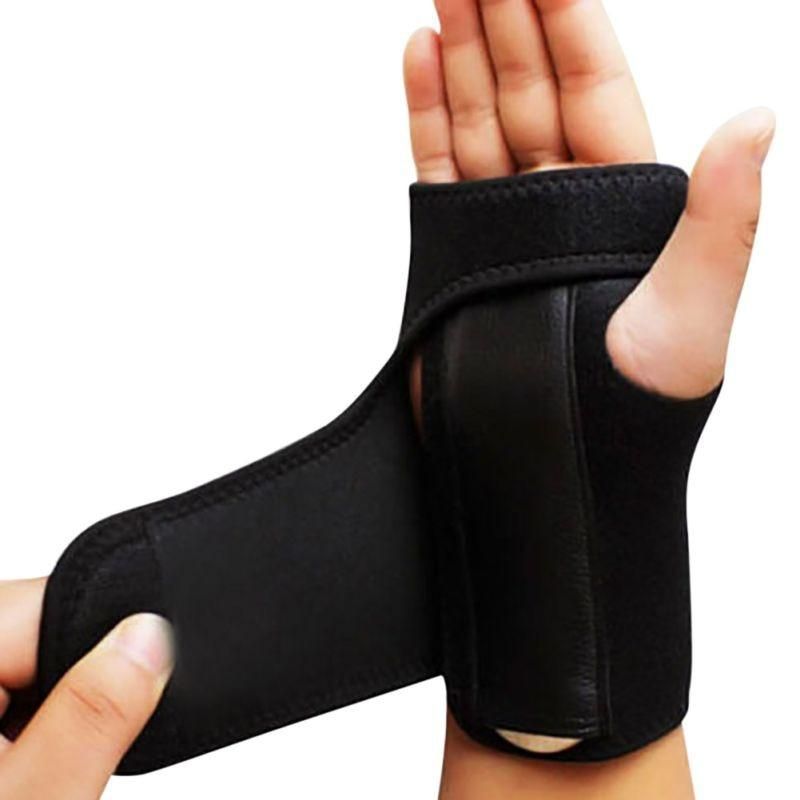Carpal Tunnel Syndrome
What is the Carpal Tunnel?
The carpal tunnel is a narrow passageway on the palm side of your wrist. Small wrist bones, known as carpal bones, form the bottom and sides of your carpal tunnel. A strong band of connecting tissue, known as the transverse carpal ligament, covers the top of the carpal tunnel.
The carpal tunnel houses the flexor tendons that allow you to bend your fingers and the median nerve, providing sensation to most of your fingers and hand.
What is Carpal Tunnel Syndrome?
Carpal Tunnel Syndrome is a medical condition that occurs when the median nerve, which runs from the forearm into the hand, becomes compressed or squeezed at the wrist. This pressure causes pain, numbness, tingling, and weakness in the hand and wrist.
How Does Carpal Tunnel Syndrome Impact Your Anatomy and Health?
When the median nerve becomes compressed, it can cause pain and discomfort in the hand, wrist, and forearm. The symptoms can affect daily activities, such as writing, typing, and gripping objects.
Risk Factors and Causes of Carpal Tunnel Syndrome
The following factors have been known to increase a person’s risk of developing carpal tunnel syndrome:
- Repetitive Motion: performing heavy, repetitive hand and wrist movements with prolonged gripping at work or play
- Congenital: Some people are born with narrower carpal tunnel canals.
- Trauma: Injuries to the wrist, such as fractures or sprains.
- Hormonal Changes: Pregnancy, menopause, birth control pills, or hormone pills are risk factors as they alter the levels of hormones in the body.
- Medical Conditions: Conditions such as hypothyroidism, rheumatoid arthritis, diabetes, obesity, gout, overactive pituitary gland, or the presence of a cyst or tumour extending to the carpal tunnel
The common medical conditions associated with carpal tunnel syndrome include:
- diabetes
- obesity
- thyroid dysfunction
- fluid retention from pregnancy or menopause
- high blood pressure
- autoimmune disorders such as rheumatoid arthritis
- fractures or trauma to the wrist
Repeated wrist motion also contributes to swelling and compression of the median nerve. This may be the result of the following:
- positioning of your wrists while using your keyboard or mouse
- prolonged exposure to vibrations from using hand tools or power tools
- any repeated movement that overextends your wrist, such as playing the piano or typing
Symptoms of Carpal Tunnel Syndrome
The symptoms of Carpal Tunnel Syndrome can vary from person to person and can include the following:
- Numbness, tingling, or burning sensation in the thumb, index, middle, and ring fingers
- Weakness in the hand and wrist
- Pain or discomfort in the wrist, hand, and forearm
- Difficulty gripping objects
- Clumsiness in the hand, which can cause you to drop objects
Stages of Carpal Tunnel Syndrome
Carpal Tunnel Syndrome can be classified into three stages based on the severity of the symptoms:
- Stage 1: Mild symptoms, including occasional numbness and tingling in the fingers, particularly at night.
- Stage 2: Moderate symptoms, including frequent numbness and tingling, weakness in the hand and wrist, and difficulty gripping objects.
- Stage 3: Severe symptoms, including constant numbness and tingling, significant weakness in the hand and wrist, and atrophy of the muscles in the hand.
Carpal Tunnel Syndrome Diagnosis
Carpal Tunnel Syndrome is diagnosed by an orthopaedic surgeon based on the individual's symptoms, medical history, physical examination, and additional diagnostic tests.
During a physical examination, the surgeon may check for numbness, tingling, and weakness in the hand and fingers. They may also assess the individual's grip strength and range of motion and evaluate for any muscle atrophy in the hand.
To confirm the diagnosis and determine the severity of the condition, the surgeon may order additional diagnostic tests, including:
- Nerve Conduction Studies: This test measures the speed and strength of electrical nerve signals. A small electrode is placed on the skin to stimulate the median nerve, and another electrode records the nerve's response. This test can help to identify nerve damage and the severity of the condition.
- Electromyography: This test measures the electrical activity of the muscles. A small needle electrode is inserted into the muscle to measure its activity. This test can help to identify muscle damage or weakness in the hand.
- Ultrasound: This test uses high-frequency sound waves to create an image of the inside of the wrist. It can help to identify any abnormalities or swelling in the carpal tunnel.
Once the diagnosis is confirmed, the surgeon can determine the most appropriate treatment plan based on the severity of the condition.
Carpal Tunnel Syndrome Treatment
Treatment for Carpal Tunnel Syndrome depends on the severity of the symptoms. In mild cases, non-surgical options may be sufficient to alleviate symptoms, including:
- Treating any underlying medical conditions, such as diabetes and arthritis
- Your hand and wrist may be immobilised with a splint or wrist brace for 4 to 6 weeks
- Ice packs may be recommended to keep down any swelling
- Avoid activities that tend to bring on the symptoms
- Medication and steroid injections may be used to treat pain and swelling
- You may be referred to therapy to be taught strengthening and stretching exercises.
In more severe cases, surgery may be necessary to relieve the pressure on the median nerve. The most common surgical procedure for Carpal Tunnel Syndrome is called Carpal Tunnel Release, which involves cutting the ligament that forms the roof of the carpal tunnel to reduce the pressure on the median nerve.
Carpal Tunnel Release Surgery
Mini-Open Carpal Tunnel Release Surgery is one type of surgery to treat carpal tunnel syndrome. It is performed as an outpatient Day Surgery procedure.
You will be given a local anaesthetic to numb your hand and wrist. Your surgeon makes a 2-3 cm incision at the base of the palm. Retractors are then used to hold the skin edges apart to allow better visualisation and exposure of the underlying tissues.
The transverse carpal ligament is divided and freed from its underlying tissue. This widens the carpal tunnel and releases pressure from the median nerve. The wound is then irrigated and closed with sutures. A small sterile dressing is then applied over the incision.

Carpal Tunnel Release Surgery Risks
- Infection
- Damage to the nerves causing weakness, paralysis, or loss of feeling in the hand and wrist area
- Stiffness to the wrist and hand
- Wrist weakness and loss of strength due to injured tendon
- Worsening of symptoms or symptoms not improved after surgery
Post-operative Care
Patients having carpal tunnel release surgery can be discharged home the same day.
Your surgeon will suggest certain post-operative procedures to recover better and avoid complications.
- Elevate the hand above heart level to reduce swelling
- A splint may be worn
- Ice packs to the surgical area to reduce swelling
- Keep the surgical incision clean and dry; cover the area with plastic wrap when bathing or showering.
- Physical therapy may be ordered to restore wrist strength
- Eating a healthy diet and not smoking will promote healing
What if Carpal Tunnel Syndrome is Untreated?
If Carpal Tunnel Syndrome is left untreated, the symptoms can worsen over time, leading to permanent nerve damage. The consequences can include:
- Constant numbness and tingling
- Significant weakness in the hand and wrist
- Atrophy of the muscles in the hand
- Difficulty performing daily activities, such as writing, typing, and gripping objects
- Permanent loss of sensation in the fingers
- Loss of hand function




